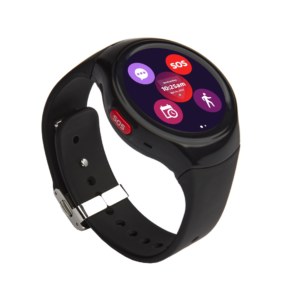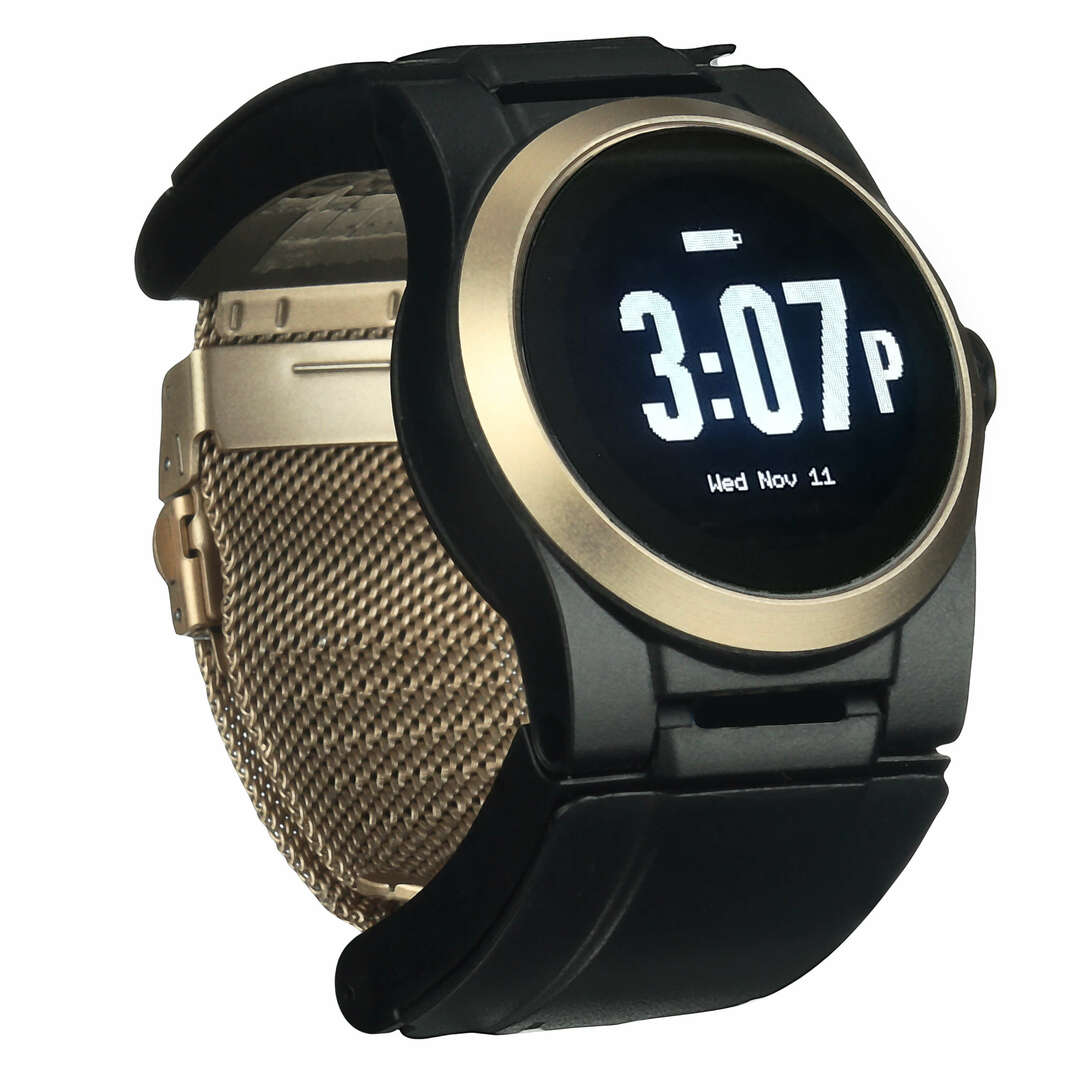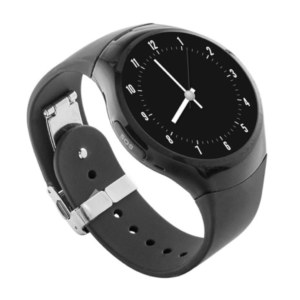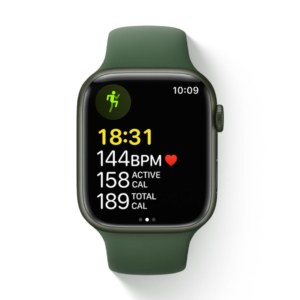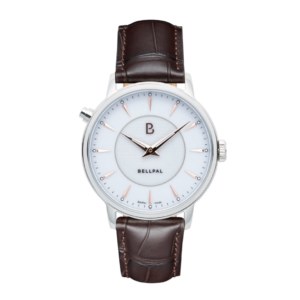Best Medical Alert Watches for 2023
Best Medical Alert Watches for 2023
Medical alert watches are the newest technological advancement in the medical alert system realm. While medical alert systems come in a variety of forms—at-home systems, pendants, buttons, or bracelets—watches are best suited to older adults who want the protection that a medical alert system provides and who are also active, tech savvy, and don’t want an obvious-looking device. In an AgingInPlace.org survey of 1,000 medical alert users, we found that medical alert watches were the second most popular medical alert system next to at-home systems, with roughly 25% of respondents saying they had purchased a watch for themself or a loved one.
Depending on the model, the watch connects the user to either 911 or the company’s emergency monitoring center, where an operator can evaluate the situation and send for emergency assistance or caregiver attention.
How We Found the Best Medical Alert Watches
What Are the Best Medical Alert Watches?
So, you’ve decided that you’d like to shop for a medical alert watch for you or your older loved one. With over 20 medical alert watches currently on the market, it can be hard to know where to begin. Below, we’ve compared what we believe are the best options.
- Best User-Friendly & Editor’s Choice: Medical Guardian MGMove
- Most Simple: Bay Alarm Medical SOS
- Best For Active Lifestyles: Apple Watch Series 7
- Most Fashionable: Bellpal AI Watch
- Best Voice-Operated: Unaliwear Kanega
Watch Cost: $199.95
Monitoring Fee: $39.95 per month
Pros
-
Two-way communication
-
Mobile app
-
Step/activity tracker
-
Messenger app with voice-to-text (additional cost)
-
Weather app
-
Reminder app (additional cost)
-
GPS location tracking
Cons
-
Not waterproof
-
Must charge nightly
-
No fall detection
-
No voice activation
-
No free trial period
The MGMove is sleek and unassuming in appearance. We selected it as “Editor’s Choice” because of its user-friendly features, talk-to-text, and its simple, stylish interface, which accommodates both tech-savvy and non-tech users. Contact Medical Guardian’s 24/7 monitoring center by pushing the “SOS” icon on the touchscreen or the emergency button on the side of the device. The included GPS location detection means that medical personnel and family can find you even if you don’t know where you are.
While the face of the watch is slightly larger than a quarter, it’s not bulky, and the interface has large, easy-to-use icons. It comes with a mobile app and access to a website portal, so you can connect to the watch to customize settings and add additional apps to the watch. This watch has an array of standard features like step counting and weather reporting. For an additional $5 a month, you gain access to Support Circle apps, which are messaging and reminder apps with voice-to-text technology. The watch will also read messages to you out loud. For $2.99 per month, OnGuard Alerts will send real-time updates about your status to your Care Circle (a list of contacts you provide) after you activate a help request—for instance, your location and whether emergency personnel are on the way.
With a 24-hour battery life, you’ll need to charge it nightly. The charging cradle has an audio cue that lets you know when your device is fully charged. This watch does not allow you to make phone calls. For those seeking fall detection, keep in mind that this feature isn’t available with the MGMove.
On Trustpilot, 70% of the reviews posted are either “excellent” or “good” for Medical Guardian as a brand. Most of the negative reviews mention billing concerns, so if you go with Medical Guardian, be sure to monitor your bill and speak with them right away when you have a concern. Automatic billing can take people by surprise. On the company’s website, they have 4.5 out of 5 stars with thousands of reviews and roughly 4.5 out of 5 stars out of more than 500 reviews for the MGMove. Overall, customers seem pleased with Medical Guardian.
Watch Cost: $159
Monitoring Fee: $29.95 per month
Pros
-
Two-way communication
-
Step tracker
-
GPS location tracking
-
Network connection indicator
-
30-day free trial period
Cons
-
Must charge nightly
-
No fall detection
-
No voice activation
-
Not waterproof
Bay Alarm Medical’s SOS Smartwatch is a device whittled down to just the basics, making it a good fit for users who might be intimidated by extra features. Its simple, intuitive interface includes a digital or analog-type face and access to a step tracker at the touch of a button. The device is designed so that the user simply has to swipe their finger on a face icon in order to alert the monitoring center of an emergency. While the help feature is easy to activate, this system does not have the capacity for fall detection and does not alert others of a help request.
There are no apps or add-ons for those who prefer to keep things simple. It does include a network connection indicator so that you’re aware when your cellular service may be sub-optimal. With an 18-hour battery life, you will need to charge it nightly.
Customers appear happy with Bay Alarm Medical, giving them 4.24 out of 5 stars on the Better Business Bureau (BBB) and 4.7 out of 5 stars on Google.
Watch Cost: $399
Monitoring Fee: NA
Pros
-
Fall detection
-
Mobile app
-
Blood oxygen sensor
-
Sleep and activity tracking
-
ECG app
-
Swimproof
-
GPS location tracking
-
14-day free trial period
Cons
-
Must charge nightly
-
Expensive
Some high-tech iPhone users prefer the Apple Watch as a medical alert device. The Apple Watch Series 7 includes fall detection technology, making it well-suited to those interested in a more active and independent lifestyle. If the watch senses a fall and the user does not respond within 60 seconds, the device calls 911 and gives the operator your location. It also messages your emergency contacts. Note: The Apple Watch contacts 911 directly and is not a monitored medical alert system. This system works internationally as well for those who like to travel.
If swimming laps or water aerobics is a regular part of your workout, the Apple Watch 7 has a waterproof mode. It also has a variety of health-focused features like a blood oxygen level monitor, ECG function, heart rate notifications, pedometer, and standing and exercise trackers. The watch also allows access to other iPhone features like apps, phone calls, and messaging.
With Apple being such a big name, it’s no surprise that the Apple Watch series has 4.5 out of 5 stars from consumer reviews on Google.
The base model starts at $399 but costs $499 if you add cellular capabilities, allowing you to use it without being near your iPhone. An additional monthly cellular service charge will apply for that feature. The price depends on the provider but is generally around $15 per month.
Special Note: Although Lively no longer makes a watch, you do have the option of adding an emergency response app from Lively to your Apple Watch in order to have a 24/7 connection to the Lively Response Team and Lively Health and Safety Services. The basic monitoring plan is $19.99 per month. If your watch detects a fall, a Lively agent will call you and stay on the line while you wait for help. For $24.99 per month, the app also allows you to connect to a nurse or doctor for urgent care questions at any time. Your loved ones can also download the app and be notified whenever you ask for help.
Watch Cost: No charge
Monitoring Fee: $19.95–$24.95/month
Pros
-
Fall detection
-
Waterproof
-
Seven-month battery life
-
30-day free trial period
-
Looks like an analog watch
Cons
-
No two-way communication through the watch
-
No voice activation
-
No warranty
-
12-month contract required
This watch is unique among other medical alert devices in that it looks like an analog watch. The classic round watch face conceals state-of-the-art fall detection and a high-tech alert system and comes in four color combinations to match your style. The analog face does not display numbers. Instead, there are tiny diamonds at the hour markers, so it may be difficult to read for some. The watch comes with an obligatory 12-month monitoring subscription.
When the watch detects a fall or the SOS button is manually pushed, the device alerts both the members of your alert network (which you enter through the mobile app) and the emergency response center. BellPal designers have analyzed real case studies of falls by older adults to ensure that the watch’s fall detection technology accurately distinguishes falls from other types of movement.
They have also equipped the devices with a long-lasting battery, which runs for seven months. The watch alerts you when it’s time to change the battery, at which time you’ll need to visit your local jeweler to get it replaced (the average price for this is usually around $10). The BellPal AI needs to stay within range of your smartphone in order to alert for help. All communication is done through your smartphone after an emergency signal is deployed, so this system is best for those in the habit of pocketing their phone. The BellPal watch will only pair with an iPhone 7 or later (with iOS 11 or later installed) or an Android OS 7 or later (with Bluetooth 4.1 or higher)—so it works with most smartphones made in 2018 or later.
Watch Price: No charge
Set Up Fee: $299
Monitoring Fee: $69.99
Pros
-
Fall detection
-
Voice-activated
-
Two-way communication
-
Reminder app
-
Waterproof
-
Don’t have to remove to charge
-
Reliable cellular plus Wi-Fi connection
-
No smartphone required
-
Works right out of the box
-
30-day free trial period
Cons
-
Bulky
-
Three-month contract required
UnaliWear designed their watch to be worn around the clock by making it waterproof, although it shouldn’t be submerged, and supplying four rechargeable lithium ion batteries. Each battery lasts 24–36 hours. Two are kept on the watch (there are holders built into the sides of the band) while two are on the charger. This is an important feature if you’re worried about falls at night and really sets this watch apart because other rechargeable watches have to be taken off at night so they can charge. The watch also has a help button on the side, which can be used with voice control, so you can simply talk to your watch to ask for help. The tech features also include a reminder app for medications and appointments. UnaliWear puts a lot of research into the fall detection feature, regularly updating the software as more data is collected. Additionally, your watch learns more about your movements the longer you wear it so fall detection accuracy increases over time.
Even though the Kanega is serious about safety, the company enjoys a bit of humor. Case in point: Your watch is named Fred Astaire. As with Siri or Alexa, addressing your watch by name allows it to listen to you (for example: “Fred Astaire, call the operator!”). This opens a conversation using the watch’s two-way speaker.
The Kanega has a sporty, durable look with three color options for the face accent: black, champagne gold, and rose gold. The Kanega connects via cellular and Wi-Fi, so even if the cellular connection in your home is spotty, you’ll have a good connection. It’s the only watch in our review which does so, making it the most reliable option regarding staying connected.
Unaliwear has an A+ rating on BBB and 4.73 out of 5 stars from consumer reviews on the overall brand. Customers also praise their Kanega watches on the brand’s website.
How Much Do Medical Alert Watches Cost?
Purchasing a medical alert watch will typically involve buying the watch and then also paying a monthly service fee for monitoring. All watches need to connect to the internet via Wi-Fi or a cellular network in order for you to be connected to an operator or call center (except the Apple Watch, which is not connected to a monitoring company unless you add the Lively app). The monthly monitoring fee includes that connection. Some companies will require a contract committing you to several months, generally three or 12. Some companies have different levels of monitoring packages, charging more for more services. Many companies offer a slight discount if you opt for quarterly or yearly payments instead of monthly.
| Medical Alert Watches | |||||||||||||||||||||||||||||||||||||||||||||||||||||||||||||||||||||||||||||||||||||||||||||||||||||||||||||||
| Medical Guardian MGMove | Watch Price | $199.95 | Monthly Monitoring Fee | $39.95 | One Time Setup Fee | N/A | Trial Period |
|---|
| Bay Alarm Medical SOS | Watch Price | $159 | Monthly Monitoring Fee | $29.95 | One Time Setup Fee | N/A | Trial Period | 30 days |
|---|
| Apple Watch Series 7 | Watch Price | $399–$499 | Monthly Monitoring Fee | N/A | One Time Setup Fee | N/A | Trial Period | 14 days |
|---|
| BellPal AI Watch | Watch Price | No Charge | Monthly Monitoring Fee | $19.95 to connect to friends and family | One Time Setup Fee | N/A | Trial Period | 30 days |
|---|
| UnaliWear Kanega | Watch Price | No Charge | Monthly Monitoring Fee | $69.95 | One Time Setup Fee | $299 | Trial Period | 30 days |
|---|
Who Needs a Medical Alert Watch?
Medical alert watches are a great fit for active older people or people with medical risks who want to continue to live independently. They keep you connected to emergency personnel and loved ones in the case of an emergency, like a fall. The CDC explains that certain conditions can increase your risk of falling, including those who experience lower body weakness, walking and balance challenges, low vision, and even those who take certain medications like sedatives or antidepressants. Medical alert watches aren’t just for falls—they keep you connected to others in the case of any emergency, medical or otherwise. In the event of a stroke, heart attack, poisoning, accident, confusion or disorientation, or finding yourself lost, a watch acts as a safeguard.
Watches also have the added benefit of looking discreet for anyone who wants to avoid other wearable medical devices. Many watches also have added health-related features like step counters, medication reminders, and heart rate monitors that users enjoy outside of the security of medical assistance.
Medical Alert Watches vs Mobile Systems?
Some active individuals prefer to wear on-the-go medical alert device systems, often designed as a clip-on or pendant. The best medical alert systems operate on cellular connections and use GPS technology to track users as they go about their day. A medical alert watch acts similarly in that it uses GPS to follow the user’s movements so the response team knows exactly where to send help. A watch is a less conspicuous style of medical device, as it gives the appearance of a high-tech smartwatch.
“Mobile alert systems provide more freedom and independence than at-home devices, which must operate within a short distance of a phone line or home phone jack,” said Dr. Austin Dowse. The CEO at Aimvein Medical, Dr. Dowse has spent over 17 years in the field of neuroscience researching the impacts of aging. He explained that medical watches sever the tie to a base device or landline. “This makes the mobile alert systems ideal for those who want to leave their homes frequently but still have safety features available if they encounter trouble.”
The biggest difference between a medical alert watch and a mobile system is the watch’s wearability and features. A smartwatch can be more comfortable than a clip-on or lanyard pendant. Some incorporate fitness tracking and other health-related features, and others integrate automatic fall detection technology. Often, alert watches rely on the presence of a nearby phone to access Wi-Fi and GPS, so these are best suited to customers who won’t forget to keep a smartphone close.
Bluetooth medical alert systems with fall detection are popular among those who fear falling and not being physically able to activate their emergency SOS button. While most major medical alert companies can pair fall detection with their mobile systems, not all medical alert watches have this technology.
Where Can I Buy Medical Alert Watches?
All of the medical alert watches that made our list—with the exception of the Apple Watch—only sell directly to consumers from their websites. Customers cannot purchase a medical device through a third-party seller as these companies partner with 24/7 emergency response centers, which requires a monthly subscription to those monitoring services. Keep in mind that Apple Watch connects you with 911, not a company emergency response center unless you install the Lively app.
Because it isn’t possible to try these watches on in person, many companies offer risk-free trials to allow customers to test out their devices before committing.
Are Medical Alert Watches Waterproof?
Almost all medical alert watches are at least water-resistant, as the bathtub and shower are high-risk areas for falls, so it’s important to be able to wear them in those settings. Both the Apple Watch Series 7 and Bellpal AI are both fully submersible up to 50 meters. While UnaliWear claims the Kanega watch is totally waterproof and is designed to be worn around the clock, it is not recommended for swimming or complete submersion.
Features to Consider When Choosing a Medical Alert Watch
Which watch you ultimately choose may come down to the features. This is where the major differences between models occur. We’ve broken down the important features into an easy-to-follow table.
| Medical Alert Watches | ||||||||||||||||||||||||||||||||||||||||||||||||||||||||||||
| Medical Guardian MGMove | Fall Detection | ❌ | Voice Activation | ❌ | Battery Life | 24 hour | Waterproof | ❌ Water-resistant | Warranty | Protection plan available for $6.99 per month |
|---|
| Bay Alarm Medical SOS | Fall Detection | ❌ | Voice Activation | ❌ | Battery Life | 18 hours | Waterproof | ❌ Water-resistant | Warranty | One-year limited warrant |
|---|
| Apple Watch Series 7 | Fall Detection | ✅ | Voice Activation | ✅ | Battery Life | 18 hours | Waterproof | ✅ | Warranty | Purchase Applecare for warranty $29–$149 |
|---|
| BellPal AI Watch | Fall Detection | ✅ | Voice Activation | ❌ | Battery Life | 7 months | Waterproof | ✅ | Warranty | ❌ |
|---|
| UnaliWear Kanega | Fall Detection | ✅ | Voice Activation | ✅ | Battery Life | 4 rechargeable batteries, each with 24- to 36-hour lifespans | Waterproof | ✅ | Warranty | One-year limited warranty |
|---|
Fall Detection
Fall detection can offer peace of mind to individuals who want to age in place or those at increased risk of having a medical emergency. If you live alone or in a home with rugs or stairs, or you have fallen before, you may be a good candidate for fall detection. In the recent survey of medical alert system users conducted by AgingInPlace.org, medical alert system owners ranked fall detection as the most important factor in their decision to purchase their system.
Bay Alarm Medical reps explained they don’t believe fall detection is reliable technology for use in a wristwatch because it causes too many false alarms. As a result, they don’t offer it in their devices and have no plans to add it to their watch. However, Medical Guardian has it in development and plans to add it to their watch by late 2022 or early 2023. Meanwhile, BellPal has done intensive research on designing accurate and responsive automatic fall detection. Kanega and Apple Series 7 include fall detection in all of their watches. The Kanega boasts fall detection learning the longer you wear the watch, which means it becomes more accurate by learning what repeated false alarms look like.
Voice Activation
For users who want to activate their watch without having to find the right button, or for those with visual impairment, a voice-activated watch may be the most appropriate fit. Some customers prefer to access watch features, like weather apps or even the help button, with a verbal command. In an emergency, you don’t have to fiddle with manual buttons or a confusing technical interface.
Battery Life
Medical alert watches run the gamut of battery types and life. Most of them run for 18–24 hours and require nightly charging, but the Kanega is meant to be worn around the clock and provides you with four rechargeable batteries, while the BellPal battery runs for four to seven months then requires replacement by a professional, more like a standard wristwatch.
Style
For many, the appeal of medical alert watches is the aesthetics. When compared to other medical alert pendants or clip-ons, watches do not appear to be a medical device. The BellPal watch is the only device on our list that does not have a digital interface. It instead uses a classic analog watch face with the option of mesh, steel, or leather bands.
Some users will gravitate to a more modern look, like the MGMove or Kanega. As mentioned previously, you can even use the Apple Watch as a medical alert system and enjoy all the interchangeable wristband colors, styles, and textures. These watches also have large touch screens for users to easily see and access watch features.
Durability
As mentioned before, water resistance is key to lengthening your watch’s lifespan. A medical watch is only useful if you’re wearing it, so all the watches we’ve included in our list are at least water-resistant and can get slightly splashed from hand washing or a quick passing through rain. Most medical alert watches use scratch-resistant glass to protect the screen as well as materials that protect the integrity of the technology in the watch. The Apple Watch Series 7 goes one step further with the promise of a crack-resistant face.
Warranty
When making an investment in a complex piece of medical equipment, it’s wise to consider the warranty before purchase. Many medical alert watches have a one-year warranty. However, customers have to pay extra for Apple Care to protect the Apple Watch and Medical Guardian’s MGMove warranty is an added monthly cost.
Comfort
A medical watch is designed to be worn all day, every day, and during a range of activities, from exercising to gardening. Consider what makes a watch most wearable for you: style, texture, or weight? You may find that you’re more comfortable using soft but durable silicone bands, or a more classic leather or metal wristband that has the feel of a conventional watch. Medical watches are generally lightweight and discreet.
Response Time
Most companies quote a 10–30 second response time when you or your device’s automatic fall detection activate a call for help. That is the amount of time that it takes for an operator to reach back out to you. The time can vary and depends mostly on the strength of your connectivity at the time of the call. If you are in a part of your home with a poor cellular connection, it will take longer to reach an operator. That’s why it’s important to discuss connectivity with a sales rep and be sure to use a connection provider that works well all over your home and yard or one with backup Wi-Fi like UnaliWear.
Pros and Cons of Medical Alert Watches
Pros
-
Wearable, discreet, and stylish
-
Extra features are often available
-
Great for active people
Cons
-
May be complicated to set up and use
-
Generally more expensive than more traditional medical alert systems
-
Doesn’t always include fall detection
How We Research and Test Medical Alert Systems
Our experts independently research, analyze, and recommend products we believe provide value to the lives of our readers. We’ve collectively spent more than 1,700 hours conducting in-depth research on medical alert systems. Our team tested multiple medical alert devices to better understand features and provide the most accurate feedback and recommendations to our readers.
To choose our top picks we:
- Engaged in ongoing independent research
- Consulted with geriatricians and adult caregivers
- Mystery shopped the brands
- Surveyed medical alert system users
- Tested various medical alert systems
- Interviewed experts in the field
- Read hundreds of verified customer reviews from trusted third parties such as Better Business Bureau and Consumer Reports
Learn more about our in-depth medical alert system testing and scoring process.
Bottom Line
Medical alert watches are a more modern alternative to classic medical alert buttons and pendants. The best medical alert watches are suited for people who want peace of mind as they continue living an active lifestyle. You can spend an afternoon in the garden, playing golf, or walking in the park knowing that help is basically in the palm of your hand.
Most medical alert watches serve as personal safety devices that double as a smartwatch with other health and communication functions. Our top pick is the MGMove due to its user-friendly features, like talk-to-text, and its simple, stylish interface, which accommodates both tech-savvy and non-tech users.
Active customers might try the Apple Watch, which allows users to track activities and monitor their heart rate. The BellPal AI is a great fit for the style-minded customer or for users who are averse to wearing a medical device—only the buyer will know that this vintage-inspired watch is equipped with fall detection and an alarm that sends a signal to your cell phone. Finally, the Kanega is a great smartwatch for older adults who are not in the habit of carrying their phone on them at all times, as this watch runs on its own cell signal.
Frequently Asked Questions
-
Most medical alert watches (and all of the models we review here) are at least water-resistant and are meant to be worn in the shower.
Other Medical Alert Guides And Medical Alert Systems That We Have Reviewed
- Best Medical Alert Systems
- Best Medical Alert Systems with Fall Detection
- Best Medical Alert Necklaces
- Best Personal Emergency Response Systems (PERS)
- Best Medical Alert Systems With No Monthly Fee
- Best Medical Alert Watches for 2023
- Best Medical Alert Bracelets for Seniors
- Best Medical Alert Systems with GPS
- Medical Guardian Review
- Aloe Care Health Review
- MobileHelp Review
- Bay Alarm Medical Review
- Medical Alert Review
- GreatCall Review
- LifeStation Review
- LifeFone Review
- Philips Lifeline Review
- MobileHelp Smart Review
- Alert1 Review
- ADT Medical Alert Review
- Apple Watch Medical Alert Review
- GreatCall Lively Mobile Reviews
- Rescue Alert Medical Alert Review
- Life Alert Review
Learn More About Medical Alert Systems
- Does AARP Cover Medical Alert Systems?
- Is a Medical Alert System Tax-Deductible?
- Medical Alert Systems Covered by Medicare
- Who Should Wear a Medical Alert System?
- Pros and Cons of a Medical Alert System from Wal-Mart
- What Is The Cost of Medical Alert Systems
- Medical Alert Jewelry Options
Hannah Sherk contributed to this report.
WRITTEN BY
Lauren Sherman, M.S., is a health content writer with a master's degree in human genetics from the University of Colorado Anschutz Medical Center, laboratory experience at National Jewish Health, and clinical experience at Children’s Hospital Colorado. She has extensively researched products to help those wanting to age in place such as medical alert systems, walk-in tubs, adjustable beds, and oxygen concentrators.
MEDICALLY REVIEWED BY
Jenny is an Adult-Gerontology Primary Care Nurse Practitioner in NYC with a passion for working with aging adults and their family members. Prior to her clinical training at Vanderbilt School of Nursing, she worked in business and medical research at Harvard Business School and Massachusetts General Hospital. As a Caregiving Coach at Givers, Jenny helps family members manage the financial, emotional, and educational stresses of caring for their loved ones who are aging in place.

